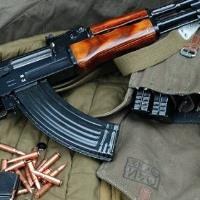(STRASBOURG) – An update to the EU’s 1991 firearms directive, approved Tuesday by Euro-MPs, include tighter controls on blank-firing and inadequately deactivated weapons, such as those used in the Paris terror attacks.
The deal on the EU firearms directive, provisionally agreed by Parliament and Council negotiators last December, includes an obligation for EU Member States to have an appropriate monitoring system in place for the issuance or renewal of licences and to exchange information.
The 1991 EU firearms directive, last updated in 2008, sets out the conditions under which private persons may lawfully acquire and possess guns or transfer them to another EU country. The EU Commission said it would review the existing firearms legislation to improve information sharing, reinforce traceability, standardise marking, and establish common standards for neutralising firearms.
The revision means EU countries will have to enforce tougher controls on blank-firing “acoustic” firearms, which can be easily converted to fire live ammunition. These firearms were used in the 2015 Charlie Hebdo terrorist attacks.
Currently, acoustic firearms can be sold without authorisation in some EU countries, but under the updated directive, they will have to remain licensed under the same rules as the original live-firing version.
The revised directive also strengthens the rules on marking firearms and clarifies the status of “deactivated” weapons (newly deactivated guns will have to be declared to national authorities). Following pressure from Parliament, the Commission pledged to adopt, by the end of May 2017 and in collaboration with national experts, revised deactivation standards and techniques for ensuring that deactivated firearms are rendered irreversibly inoperable.
There are new, stricter controls on certain semi-automatic firearms when they are fitted with high capacity magazines ((i.e. over 20 rounds in short semi-automatics and over ten in long ones) and on automatic firearms that have been converted into semi-automatics. However, individuals who legally own these today will be able to continue to do so provided their own member state agrees.
Member states will be able to grant “Category A” authorisations to certain types of individuals, e.g. target shooters and reservists, as well as to recognised museums and, in exceptional and duly reasoned cases, to collectors, subject to strict security measures.
The new rules also require that all information needed to trace and identify firearms be recorded in national data-filing systems and that arrangements be made to improve the exchange of information between member states.
The draft law still needs to be formally approved by the other co-legislator, the EU Council of Ministers.
Member states will have 15 months from the date of entry into force of the directive to transpose the new rules into national law and 30 months to put in place data-filling systems for registering all information needed in order to trace and identify firearms.
Further information, European Parliament


